 | TODAY IN SCIENCE HISTORY
NEWSLETTER - 27 MAY |
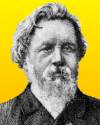 On 27 May 1818, Frans Donders was born, an eminent Dutch physician whose study of the physiology and pathology of the eye laid the foundation for a scientific approach to correcting such defects of vision as astigmatism, nearsightedness and farsightedness. On 27 May 1818, Frans Donders was born, an eminent Dutch physician whose study of the physiology and pathology of the eye laid the foundation for a scientific approach to correcting such defects of vision as astigmatism, nearsightedness and farsightedness.
You can read here a short Biography of Frans Donders from An Introduction to the History of Medicine (1913).
|
 On 27 May 1972, Roy K. Marshall died, an American astronomer and pioneering TV science broadcaster. He was presenting science to the public long before Neil DeGrasse Tyson, Michio Kaku or even Carl Sagan. Marshall began his four-year NBC TV show , "The Nature of Things," on 5 Feb 1948 with a broadcast from the Fels Planetarium. His weekly 15-minute programs became so popular they ran year-round. Today's Science Store pick is: The Nature of Things: The Wonders of the Atom and the Worlds of Outer Space, by Roy K. Marshall. Read if for a time capsule of what science was interesting to the general reader in 1951. Available Used from $0.01 (as of time of writing). On 27 May 1972, Roy K. Marshall died, an American astronomer and pioneering TV science broadcaster. He was presenting science to the public long before Neil DeGrasse Tyson, Michio Kaku or even Carl Sagan. Marshall began his four-year NBC TV show , "The Nature of Things," on 5 Feb 1948 with a broadcast from the Fels Planetarium. His weekly 15-minute programs became so popular they ran year-round. Today's Science Store pick is: The Nature of Things: The Wonders of the Atom and the Worlds of Outer Space, by Roy K. Marshall. Read if for a time capsule of what science was interesting to the general reader in 1951. Available Used from $0.01 (as of time of writing).
Yesterday's pick: Builders of the Bridge: The Story of John Roebling and his Son, by D.B. Steinman.
For picks from earlier newsletters, see the Today in Science Science Store home page. | |
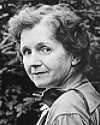 | "Over increasingly large areas of the United States, spring now comes unheralded by the return of the birds, and the early mornings are strangely silent where once they were filled with the beauty of bird song." - American marine biologist in the quiz below (born 27 May 1907)  |
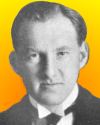 | "Saying that each of two atoms can attain closed electron shells by sharing a pair of electrons is equivalent to saying that husband and wife, by having a total of two dollars in a joint account and each having six dollars in individual bank accounts, have eight dollars apiece!"
- Kasimir Fajans, Polish-American physical chemist (born 27 May 1887)  |
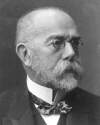
| "If my efforts have led to greater success than usual, this is due, I believe, to the fact that during my wanderings in the field of medicine, I have strayed onto paths where the gold was still lying by the wayside. It takes a little luck to be able to distinguish gold from dross, but that is all."
- Robert Koch, German physician and bacteriologist (died 27 May 1910)  |
| Before you look at today's web page, see if you can answer some of these questions about the events that happened on this day. Some of the names are very familiar. Others will likely stump you. Tickle your curiosity with these questions, then check your answers on today's web page. |
 |  An American biologist born 27 May 1907 was well known for her writings on environmental pollution and the natural history of the sea. She is most well-known for her warning to the public about the long term effects of misusing pesticides including DDT. In her book, Silent Spring (1962), she challenged the practices of agricultural scientists and the government, and called for a change in the way humankind viewed the natural world. An American biologist born 27 May 1907 was well known for her writings on environmental pollution and the natural history of the sea. She is most well-known for her warning to the public about the long term effects of misusing pesticides including DDT. In her book, Silent Spring (1962), she challenged the practices of agricultural scientists and the government, and called for a change in the way humankind viewed the natural world.
 Can you name this author? Can you name this author? |
 |  Sir John Douglas Cockcroft was a British physicist, joint winner, with Ernest T.S. Walton of Ireland, of the 1951 Nobel Prize for Physics. Sir John Douglas Cockcroft was a British physicist, joint winner, with Ernest T.S. Walton of Ireland, of the 1951 Nobel Prize for Physics.
 What is the equipment known with the Cockcroft-Walton name? What is the equipment known with the Cockcroft-Walton name? |
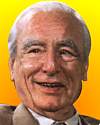 |  Ernst August Friedrich Ruska (1906-1988) was a German electrical engineer who invented a form of microscope. He was awarded half of the Nobel Prize for Physics in 1986. Ernst August Friedrich Ruska (1906-1988) was a German electrical engineer who invented a form of microscope. He was awarded half of the Nobel Prize for Physics in 1986.  What form of microscope did this scientist produce? What form of microscope did this scientist produce? |
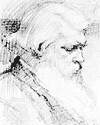
|  Sir Joseph Wilson Swan (1828-1914) was an English physicist and chemist who invented the dry photographic plate, an important improvement in photography and a step in the development of modern photographic film. An invention attributed to Edison actually was made after Swan had already invented it for himself. Sir Joseph Wilson Swan (1828-1914) was an English physicist and chemist who invented the dry photographic plate, an important improvement in photography and a step in the development of modern photographic film. An invention attributed to Edison actually was made after Swan had already invented it for himself.
 What is the Swan invention that Edison followed? What is the Swan invention that Edison followed? |
|  In 1919, oil was struck at England's first inland oilwell. Since 1915, the British Government, prompted by the war effort and awareness of the importance in petroleum products had investigated extracting oil on the mainland. The bore was 3070-ft deep when oil was struck in a sandy limestone horizon near the top of a faulted dome in the main carboniferous limestone measures. Oil flowed from the well on 7 Jun that year. Between that date and Dec 1927, 2500 tons of oil was produced. The average production of 6 barrels a day compared favourably with US oil wells of the period. In 1938, the well was deepened to continue operation. Production ceased in 1945, and the well was finally capped in 1952. In 1919, oil was struck at England's first inland oilwell. Since 1915, the British Government, prompted by the war effort and awareness of the importance in petroleum products had investigated extracting oil on the mainland. The bore was 3070-ft deep when oil was struck in a sandy limestone horizon near the top of a faulted dome in the main carboniferous limestone measures. Oil flowed from the well on 7 Jun that year. Between that date and Dec 1927, 2500 tons of oil was produced. The average production of 6 barrels a day compared favourably with US oil wells of the period. In 1938, the well was deepened to continue operation. Production ceased in 1945, and the well was finally capped in 1952.
 Where in England was this oil strike made? |
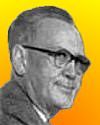 |  On 27 May of a certain year, cellophane transparent adhesive tape was patented by Richard Drew of St. Paul, Minnesota. He assigned the rights to the 3M Company, which marketed the tape from September of that year under the trademark "Scotch." On 27 May of a certain year, cellophane transparent adhesive tape was patented by Richard Drew of St. Paul, Minnesota. He assigned the rights to the 3M Company, which marketed the tape from September of that year under the trademark "Scotch."
 In what decade was patent issued? |

|  In 1931, Auguste Piccard and Charles Knipfer took man's first trip into the stratosphere. This required the use of a pressurized cabin, which Piccard had designed. On-board experiements included the use of an electroscope to investigate cosmic rays In 1931, Auguste Piccard and Charles Knipfer took man's first trip into the stratosphere. This required the use of a pressurized cabin, which Piccard had designed. On-board experiements included the use of an electroscope to investigate cosmic rays
 At what altitude, to the nearest mile, did they travel above the earth? |
When you have your answers ready to all the questions above, you'll find all the information to check them, and more, on the May 27 web page of Today in Science History. Or, try this link first for just the brief answers.
Fast answers for the previous newsletter for May 26: Sally Ride; Geissler tube; insulin; ammonia-soda process for producing soda ash (sodium carbonate); in his words, "very little animalcules" (bacteria and one-celled animals); the decade including the year 1981.
|
 If you enjoy this newsletter, the website, or wish to offer encouragement or ideas, please send feedback by using your mail reader Reply button. If you enjoy this newsletter, the website, or wish to offer encouragement or ideas, please send feedback by using your mail reader Reply button. |
--
If you do not want to receive any more newsletters,
Unsubscribe To update your preferences and to unsubscribe visit
this link 


 On 27 May 1818, Frans Donders was born, an eminent Dutch physician whose study of the physiology and pathology of the eye laid the foundation for a scientific approach to correcting such defects of vision as astigmatism, nearsightedness and farsightedness.
On 27 May 1818, Frans Donders was born, an eminent Dutch physician whose study of the physiology and pathology of the eye laid the foundation for a scientific approach to correcting such defects of vision as astigmatism, nearsightedness and farsightedness.



 An American biologist born 27 May 1907 was well known for her writings on environmental pollution and the natural history of the sea. She is most well-known for her warning to the public about the long term effects of misusing pesticides including DDT. In her book, Silent Spring (1962), she challenged the practices of agricultural scientists and the government, and called for a change in the way humankind viewed the natural world.
An American biologist born 27 May 1907 was well known for her writings on environmental pollution and the natural history of the sea. She is most well-known for her warning to the public about the long term effects of misusing pesticides including DDT. In her book, Silent Spring (1962), she challenged the practices of agricultural scientists and the government, and called for a change in the way humankind viewed the natural world.  Can you name this author?
Can you name this author?
 Sir John Douglas Cockcroft was a British physicist, joint winner, with Ernest T.S. Walton of Ireland, of the 1951 Nobel Prize for Physics.
Sir John Douglas Cockcroft was a British physicist, joint winner, with Ernest T.S. Walton of Ireland, of the 1951 Nobel Prize for Physics. What is the equipment known with the Cockcroft-Walton name?
What is the equipment known with the Cockcroft-Walton name?
 Ernst August Friedrich Ruska (1906-1988) was a German electrical engineer who invented a form of microscope. He was awarded half of the Nobel Prize for Physics in 1986.
Ernst August Friedrich Ruska (1906-1988) was a German electrical engineer who invented a form of microscope. He was awarded half of the Nobel Prize for Physics in 1986.  What form of microscope did this scientist produce?
What form of microscope did this scientist produce? 
 Sir Joseph Wilson Swan (1828-1914) was an English physicist and chemist who invented the dry photographic plate, an important improvement in photography and a step in the development of modern photographic film. An invention attributed to Edison actually was made after Swan had already invented it for himself.
Sir Joseph Wilson Swan (1828-1914) was an English physicist and chemist who invented the dry photographic plate, an important improvement in photography and a step in the development of modern photographic film. An invention attributed to Edison actually was made after Swan had already invented it for himself. What is the Swan invention that Edison followed?
What is the Swan invention that Edison followed?  In 1919, oil was struck at England's first inland oilwell. Since 1915, the British Government, prompted by the war effort and awareness of the importance in petroleum products had investigated extracting oil on the mainland. The bore was 3070-ft deep when oil was struck in a sandy limestone horizon near the top of a faulted dome in the main carboniferous limestone measures. Oil flowed from the well on 7 Jun that year. Between that date and Dec 1927, 2500 tons of oil was produced. The average production of 6 barrels a day compared favourably with US oil wells of the period. In 1938, the well was deepened to continue operation. Production ceased in 1945, and the well was finally capped in 1952.
In 1919, oil was struck at England's first inland oilwell. Since 1915, the British Government, prompted by the war effort and awareness of the importance in petroleum products had investigated extracting oil on the mainland. The bore was 3070-ft deep when oil was struck in a sandy limestone horizon near the top of a faulted dome in the main carboniferous limestone measures. Oil flowed from the well on 7 Jun that year. Between that date and Dec 1927, 2500 tons of oil was produced. The average production of 6 barrels a day compared favourably with US oil wells of the period. In 1938, the well was deepened to continue operation. Production ceased in 1945, and the well was finally capped in 1952. Where in England was this oil strike made?
Where in England was this oil strike made?
 On 27 May of a certain year, cellophane transparent adhesive tape was patented by Richard Drew of St. Paul, Minnesota. He assigned the rights to the 3M Company, which marketed the tape from September of that year under the trademark "Scotch."
On 27 May of a certain year, cellophane transparent adhesive tape was patented by Richard Drew of St. Paul, Minnesota. He assigned the rights to the 3M Company, which marketed the tape from September of that year under the trademark "Scotch."  In what decade was patent issued?
In what decade was patent issued?
 In 1931, Auguste Piccard and Charles Knipfer took man's first trip into the stratosphere. This required the use of a pressurized cabin, which Piccard had designed. On-board experiements included the use of an electroscope to investigate cosmic rays
In 1931, Auguste Piccard and Charles Knipfer took man's first trip into the stratosphere. This required the use of a pressurized cabin, which Piccard had designed. On-board experiements included the use of an electroscope to investigate cosmic rays At what altitude, to the nearest mile, did they travel above the earth?
At what altitude, to the nearest mile, did they travel above the earth? If you enjoy this newsletter, the website, or wish to offer encouragement or ideas, please send feedback by using your mail reader Reply button.
If you enjoy this newsletter, the website, or wish to offer encouragement or ideas, please send feedback by using your mail reader Reply button. 

Δεν υπάρχουν σχόλια:
Δημοσίευση σχολίου